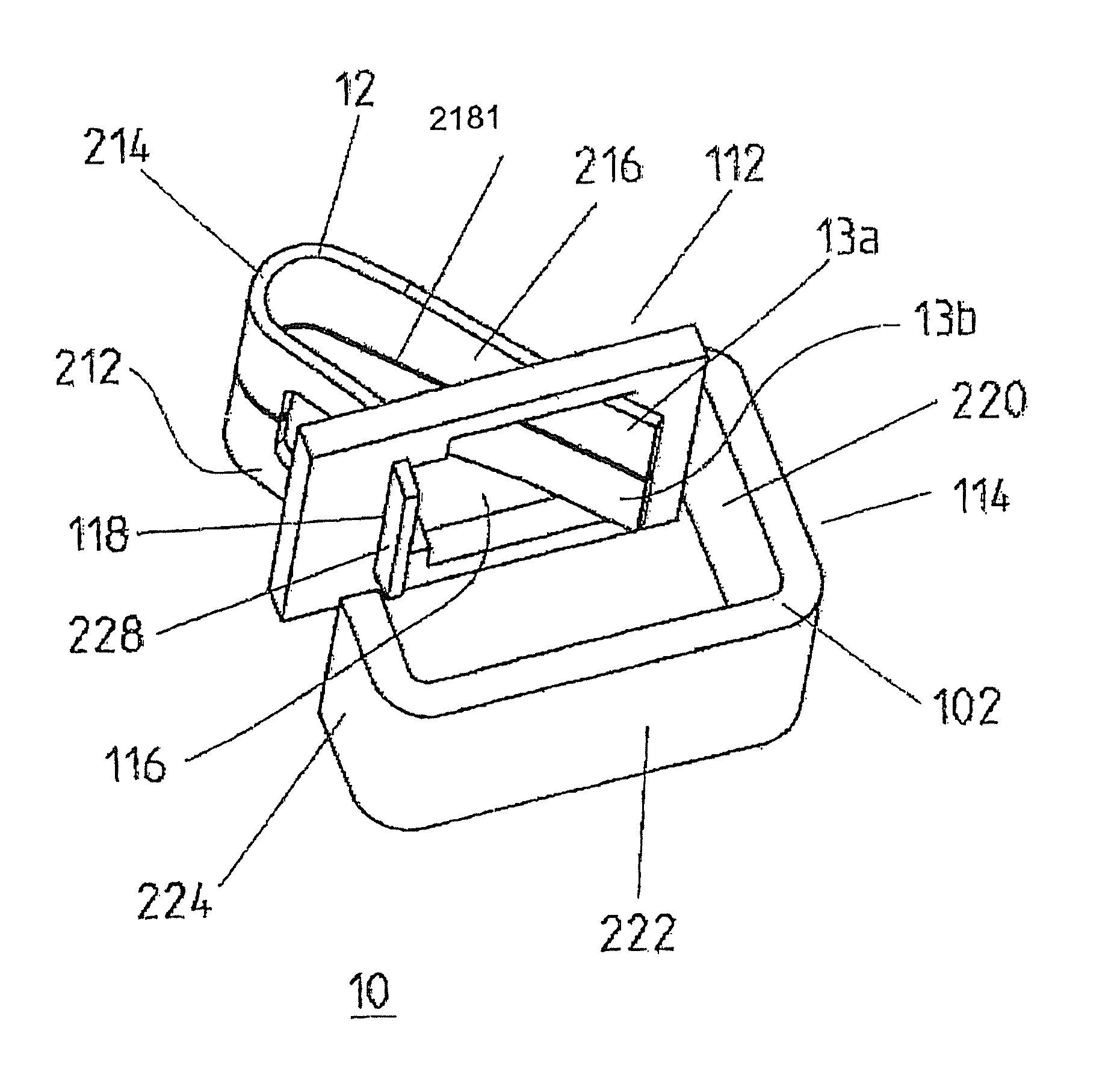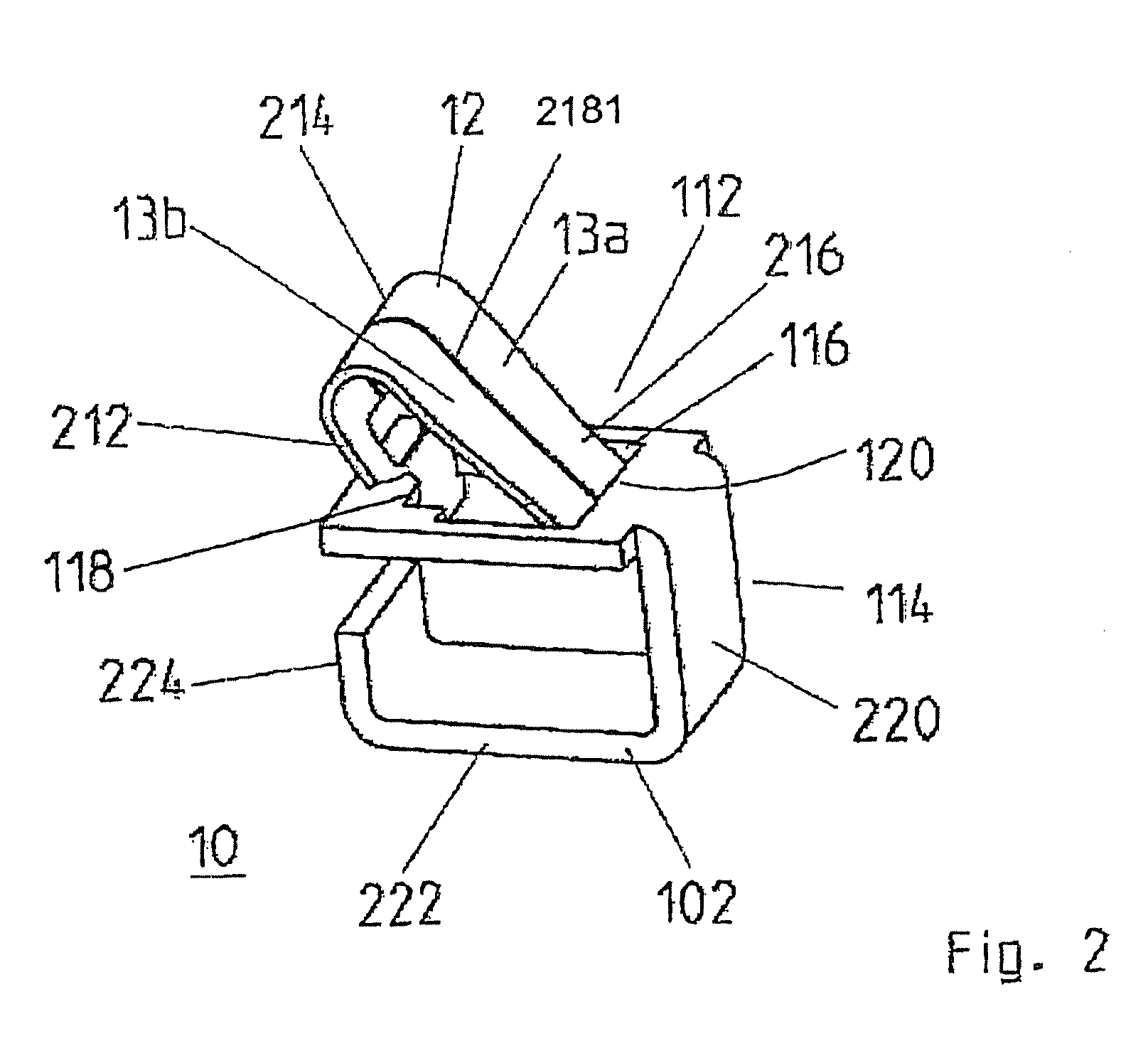Clamping connection, connecting terminal arrangement and installation switching device
a technology of installation switching device and terminal arrangement, which is applied in the direction of clamped/spring connection, electrical equipment, connections, etc., can solve the problems of disadvantageous operator lever ratio, and achieve the effect of increasing the mechanical stability of the terminal connection
- Summary
- Abstract
- Description
- Claims
- Application Information
AI Technical Summary
Benefits of technology
Problems solved by technology
Method used
Image
Examples
Embodiment Construction
[0034]In the figures, identical or identically acting components or elements are in each case provided with identical reference numbers even if they are configured in slightly modified form in different variants of the embodiment.
[0035]Initially, FIG. 1 will be considered. The terminal connection 10 comprises a conductor bar 102 and a clamping spring 12. The conductor bar 102 comprises a connecting end 112 and an adjoining discharge area 114. At the connecting end 112, it has a window-like opening 116 with a support edge 118 and a clamping edge 120 opposite the support edge 118. The clamping edge 120 is located at the transition of the connecting end 112 into the discharge area 114.
[0036]The clamping spring 12 has a support leg 212 with which it is supported on the support edge 118 of the conductor bar 102. The support can be effected in such a manner that the supporting leg 212 has at its free end an upward bend 228 with which it partially encloses the support edge 118 for the purp...
PUM
 Login to View More
Login to View More Abstract
Description
Claims
Application Information
 Login to View More
Login to View More - R&D
- Intellectual Property
- Life Sciences
- Materials
- Tech Scout
- Unparalleled Data Quality
- Higher Quality Content
- 60% Fewer Hallucinations
Browse by: Latest US Patents, China's latest patents, Technical Efficacy Thesaurus, Application Domain, Technology Topic, Popular Technical Reports.
© 2025 PatSnap. All rights reserved.Legal|Privacy policy|Modern Slavery Act Transparency Statement|Sitemap|About US| Contact US: help@patsnap.com



